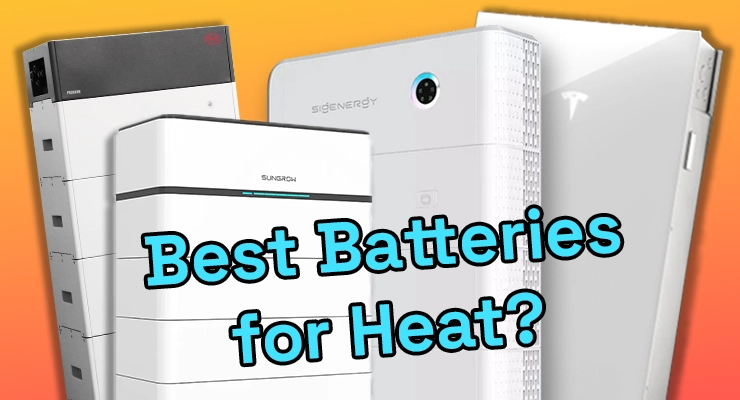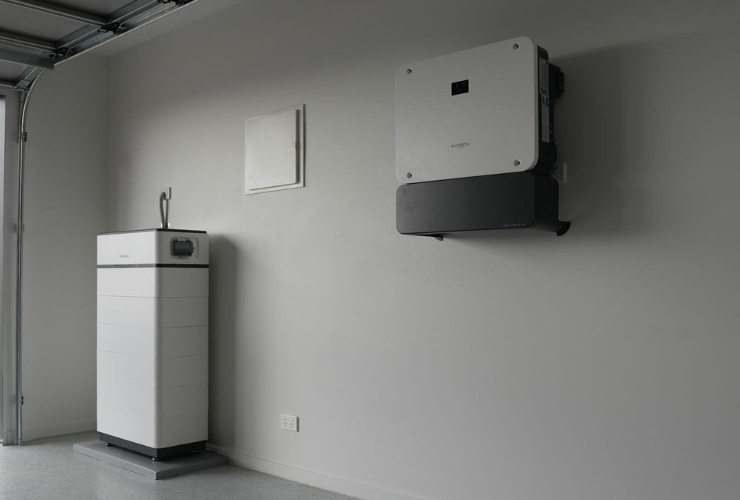Fast read
Choosing a solar battery for Australia's hot climate requires focusing on models with excellent thermal management and heat-tolerant chemistry. Lithium Iron Phosphate (LFP) batteries are generally superior in high temperatures compared to other lithium-ion types. Look for brands that specify a wide operating temperature range and feature active cooling systems, as sustained heat can reduce a battery's lifespan and efficiency. Brands like Sigenergy, Sungrow, and Tesla are well-regarded in the Australian market for their robust designs and effective heat management.
What battery brands are best suited to Australia’s hot climate?
Australia’s sunshine is a massive advantage for solar energy production, but the intense heat that comes with it can be a serious challenge for home batteries. High temperatures are a primary factor that can degrade a battery’s performance and shorten its lifespan. For homeowners looking to invest in energy storage, it’s crucial to understand which batteries are built to withstand and perform reliably in our demanding climate.
This article explains how heat affects batteries, what features to look for, and which brands are building products well-suited for Australian conditions.
How does heat affect a battery’s health and performance?
Batteries are complex chemical systems, and their performance is directly tied to their operating temperature. While they are designed to work within a range of conditions, sustained exposure to extreme heat can cause several problems.
Excessive heat, especially temperatures consistently above 30-40°C, accelerates the chemical reactions inside the battery cells. This can lead to faster degradation of the battery’s internal components, permanently reducing its ability to hold a charge. Think of it like a fast-forward button on the battery’s ageing process.
To protect themselves, all modern batteries have a built-in Battery Management System (BMS). This electronic brain constantly monitors the battery’s temperature, voltage, and current. If the internal temperature gets too high, the BMS will automatically reduce the battery’s power output (a process called “derating“) or even shut it down completely to prevent damage. This is a critical safety feature, but it means on a scorching hot afternoon, your battery might not be able to power as many appliances as you’d expect.
Key features for a hot-climate battery
When choosing a battery for a warm region of Australia, it’s not just about the brand name. It’s about the technology and design principles that help it manage heat effectively.
- Superior chemistry: For residential use, Lithium Iron Phosphate (LFP or LiFePO4) batteries are widely considered the best choice for hot climates. LFP chemistry is inherently more thermally stable and less prone to overheating than other lithium-ion chemistries like Nickel Manganese Cobalt (NMC). This makes them a safer and more durable option for Australian homes.
- Wide operating temperature range: Always check the manufacturer’s technical specifications for the “operating temperature range.” A wider range indicates a more robust design. For example, a battery rated to operate up to 50°C or even 55°C is better suited for hot environments.
- Effective thermal management: How a battery cools itself is critical. Systems can be passively cooled (relying on heat sinks and natural air convection) or actively cooled (using fans or liquid cooling). Active liquid cooling, as seen in some premium models, is highly effective at maintaining a stable internal temperature even when the ambient temperature is high.
- High IP rating: The Ingress Protection (IP) rating indicates how well the battery’s enclosure protects it from dust and water. For outdoor installations, a rating of IP65 or higher is essential to keep out dust and rain, which can clog cooling vents and lead to overheating.
What are the best battery brands for Australian heat?
Several reputable brands available in Australia have earned a strong reputation for performance and durability in hot conditions. These brands typically incorporate the key features mentioned above.
Sigenergy: Built for tough conditions
A strong contender in the Australian market, Sigenergy offers an all-in-one system called the SigenStor. This unit is notable for its very wide operating temperature range, from -20°C up to 55°C, and a high IP66 rating, making it highly resilient to harsh weather. It uses LFP battery cells, known for their safety and longevity, and features an advanced thermal management system. Some models even begin to derate power at a higher threshold of around 40°C, continuing to supply reduced power up to its 55°C limit.
Sungrow: A reliable and popular choice
Sungrow has become a very popular choice for Australian homes, offering modular LFP battery systems that are both reliable and cost-effective. The Sungrow SBR series has an operating temperature range for discharging of -30°C to 50°C. While their charging temperature range starts at 0°C, their robust LFP chemistry and design make them a dependable option for managing heat during the long, sunny days of an Australian summer. Their modular design is also a significant advantage, allowing homeowners to expand their storage capacity easily.
Tesla: A benchmark for thermal management
Tesla’s Powerwall has long been a benchmark in the home battery market, partly due to its sophisticated liquid thermal management system. The Powerwall 2 and the newer Powerwall 3 are designed to operate efficiently between -20°C and 50°C. The active cooling system is highly effective at keeping the battery cells within their optimal temperature range, ensuring both performance and longevity even during heat waves. While it uses NMC chemistry, its advanced thermal management makes it a proven performer in hot Australian climates.
The importance of correct installation
Even the best battery can underperform if installed incorrectly. A professional accredited by Solar Accreditation Australia (SAA) is essential for ensuring your battery is safe and operates efficiently. The accreditation scheme fully transitioned to SAA from the Clean Energy Council in May 2024.
According to Australian Standards (AS/NZS 5139), there are strict rules about where batteries can be located. They cannot be installed in habitable rooms, ceiling spaces, or under stairways. A good installer will recommend a location that is shaded from direct sun, well-ventilated, and protected from the elements, such as a garage or a shaded southern wall of the house. This helps the battery’s own cooling system do its job effectively and protects your investment for the long term.
Your final checklist for a heat-resilient battery
Choosing the right battery is a significant decision. By prioritising technology over just a brand name, you can ensure you get a system that will perform reliably through many Australian summers to come. Remember to focus on:
- Chemistry: LFP offers superior thermal stability.
- Operating Temperature: Look for a wide range, with an upper limit of at least 50°C.
- Cooling System: Active cooling (fans or liquid) provides the best performance in extreme heat.
- Installation: Always use a professional accredited by Solar Accreditation Australia (SAA) and choose a shaded, well-ventilated location.
By keeping these factors in mind, you can confidently select a battery that is perfectly suited to Australia’s unique climate, providing clean, reliable power for years to come. If you need help finding accredited local professionals who can provide tailored advice, Your Energy Answers offers a free service to connect you with trusted installers in your area.






